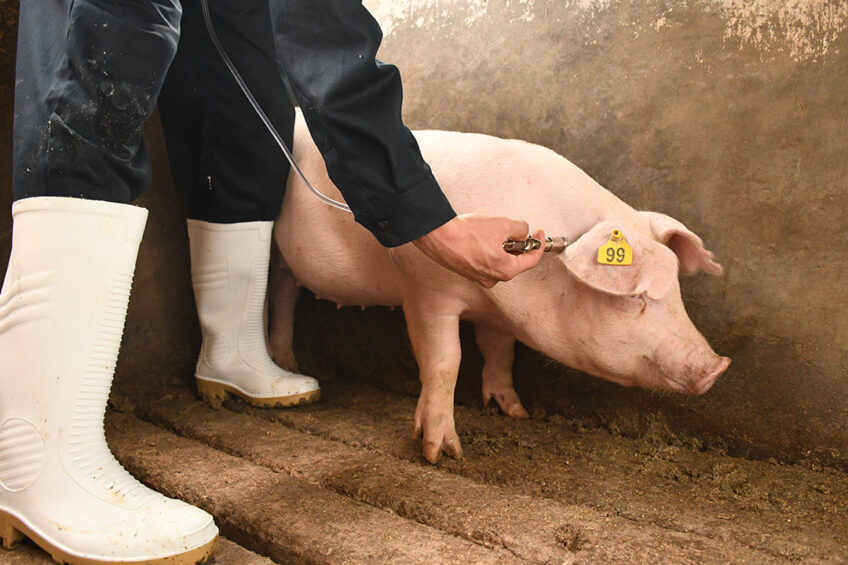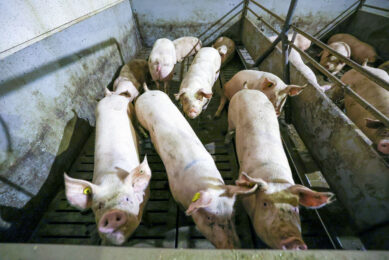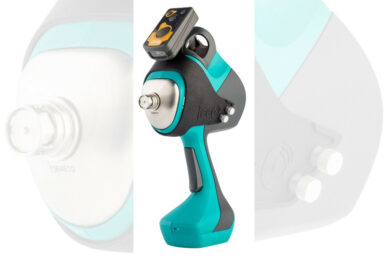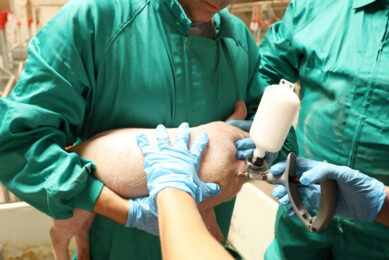Immunological castration is not only useful for male pigs

The approach to grow entire male pigs by using immunological castration was introduced about 25 years ago. The strategy was an alternative to physical castration, and was launched globally. The Americas and a few other countries also use the vaccine in gilts. The European Commission approved marketing authorisation as well.
The global use of the Improvac (Improvest in Canada and the US) vaccine in fattening gilts increases globally. In a meta-analysis review paper from 2020, researchers from Germany, Belgium and vaccine manufacturer Zoetis, stated that the vaccine had recently emerged as an option for rearing market gilts up to heavier harvest weights.
2-dose vaccine approach
In gilts, just like in male pigs, the vaccine is a 2-dose approach. Soon after the second injection, the pig produces antibodies against its own gonadotropin releasing factor. This causes a temporary immunological suppression of the gilt’s ovarian function and oestrus, which helps reduce sexual behaviour and unwanted pregnancies in maturing gilts that are raised for market.
Improved animal welfare results include less mounting and aggressive behaviour in mixed-gender pens. Overall, vaccinated pigs are calmer, with higher and more consistent feed intake and higher corresponding growth rates.
25% of the global use of Improvac is in gilts
Dr Alvaro Aldaz is a veterinarian and director of global swine marketing at Zoetis. “In Canada, the use in fattening gilts is comparable to the use in male pigs. As other countries approve the vaccine’s use in gilts, it is growing fast,” he says. “Today, we estimate that more than 25% of the global use of Improvac is in gilts, and this proportion continues to grow.”
Global use details
The vaccine is currently approved for use in male pigs in 72 countries (all with a significant swine industry). The approvals for use in gilts intended for market is growing. For some time, it has been approved for gilt use in the Americas as well as several other countries like Thailand, Vietnam, and Australia. In November 2022, Zoetis also achieved European Commission marketing authorisation for use of the vaccine for gilts from 10 weeks of age.
The vaccine received the Environmental Product Declaration certification because of additional contributions to improve environmental sustainability. That is based on the reduction of manure produced by vaccinated pigs when compared with physically-castrated males, for instance because they reach slaughter earlier and have a better FCR.
Meta-analysis paper details
The 2020 meta-analysis, which included 22 published articles, included growth performance and final harvest parameters, general carcass traits and yield of valuable meat, meat and fat quality parameters.
The researchers state that “from the perspective of pig producers, primary analyses showed that immunised gilts had a significantly increased average daily gain (+45.1 g/day) and daily feed intake (+0.19 kg/day), a higher final live weight (+4.0 kg) and more backfat (+2.8 mm).”
Immunised gilts have heavier carcasses
From the perspective of the pork packers, immunised gilts have heavier carcasses (+3.2 kg), whereas the dressing percentage is similar. Immunised gilts are less lean (-1.5% units) and have 0.21% units more of intramuscular fat. The yields of ham, shoulder, and loin are similar, whereas the yield of belly is significantly higher (+0.28 kg).
Across the 22 papers, there were no differences found in meat quality parameters (colour, pH24, and drip loss) between immunised gilts and untreated gilts, whereas a lower iodine value in immunised gilts indicates an improved fat quality.
2022 analysis
In a May 2022 paper in the Journal of Animal Science, researchers from Zoetis, North Dakota State University and DSP Consulting examined 4 peer-reviewed articles (from Brazil, Belgium and Spain) and 5 Zoetis studies in the US and Canada.
In terms of average daily feed intake, average daily gain, final body weight, and hot carcass weight, vaccinated gilts compared to unvaccinated animals had a 3.2% increase in final bodyweight and 3.1% increase in hot carcass weight. Overall average daily gain was increased by 4.4% with an 11.7% increase after the second dose.
Similarly, Improvac-treated gilts showed an increase in overall average daily feed intake of 6.1% and 12.8% increase after the second dose. There were no significant differences in overall feed efficiency in any of the studies.
Profitability
For his part, whilst Dr Eduardo Beltranena of the University of Alberta in Canada has not studied the product in gilts, he states that its use “makes physiological sense in that if gilts grow like barrows, their carcasses would be more alike and would eliminate the finishing growth lag typically observed in gilts vs. barrows”.
Profitability would also depend on the grading system, he says, as a fatter gilt carcass would be penalised by strict grading. In addition, Dr Aldaz says the producer may benefit by fewer days to market and greater yields of shoulder and ham despite a fatter gilt carcass.
At the 2022 World Pork Expo, Dr Taylor Engle, veterinarian with Four Star Veterinary Service, stated that producers using Improvac in gilts can expect to market them 7-10 days earlier.
Diet cost and composition
Aldaz explains that regarding return on investment (ROI), the more expensive feed is, the better the ROI is for males. It is somewhat different for gilts: “Conversely, as feed prices go down, the use of Improvac in gilts becomes more attractive from a ROI perspective, while it still remains very positive in males.”
He adds, “It is important to say that this technology is very flexible, and that adjusting the timing of the second dose relative to harvest is critical. The longer the gilts are immunologically castrated, the more feed is consumed resulting in faster growth, heavier final weights, and increased fat in carcasses. This increase in feed consumption can be compensated with a more diluted and cheaper diet, what helps in achieving the production goals in each system, maximising performance and benefits.”
For the packer there are also important profit benefits, says Aldaz, as the carcasses from immunised gilts are heavier, with additional fat that contributes to significantly better quality.











